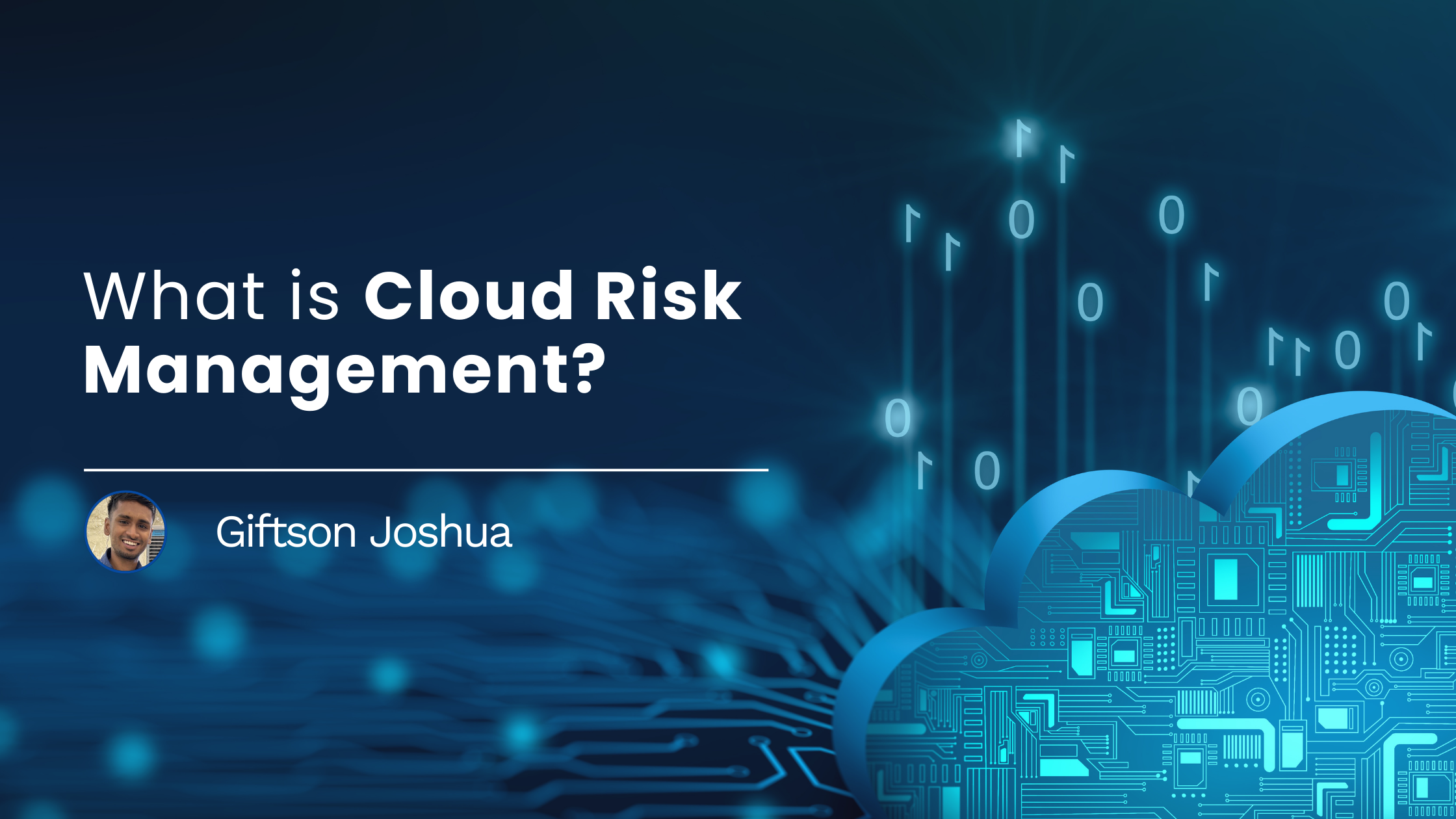Cloud risk management focuses on identifying, evaluating, and addressing risks specific to cloud environments. It recognizes that the cloud introduces a different set of challenges compared to traditional on-premises setups, where boundaries are clearer, systems are fully controlled, and changes tend to happen more slowly.
In the cloud, responsibilities are distributed between service providers and the organizations that use them. That split makes visibility and accountability more complex. Security teams need to understand what assets exist, how they’re configured, who can access them, and where weaknesses might emerge.
The pace of change in cloud environments leaves little room for static risk models. New workloads, configurations, and services appear rapidly, often across multiple regions or platforms. Managing risk under these conditions requires a process that adapts quickly and maintains awareness of system context and business relevance.
Cloud risk management is less about chasing every alert and more about building a clear picture of exposure. The matter of deciding where to act first follows after. It’s a way for teams to stay grounded while operating in systems that are always shifting.
Cloud vs. On-Premises Risk
The contrast between cloud and on-premises risk stems from fundamental differences in architecture, control models, and operational dynamics. In on-premises environments, organizations maintain full ownership of the infrastructure stack, such as physical servers, networks, storage, hypervisors, and applications. Security controls are tightly coupled with the environment, often governed by centralized IT teams, with changes occurring through well-defined processes. Risk management here revolves around perimeter defense, internal segmentation, patch cycles, and scheduled audits.
Cloud environments, in contrast, operate on a shared responsibility model where control is split between the cloud service provider (CSP) and the customer. The provider manages the underlying infrastructure, while the customer is responsible for securing workloads, configurations, access policies, and data. This separation increases the attack surface and introduces complexity, particularly in multicloud or hybrid deployments where each platform brings different native controls, visibility mechanisms, and logging schemas.
How to Assess Risk in the Cloud?
Cloud risk assessment starts with defining responsibilities. The Shared Responsibility Model (SRM) outlines that cloud service providers (CSPs) secure the infrastructure, while organizations must protect their own cloud-based assets. Security teams need to evaluate configurations, data access controls, and compliance requirements in real-time to mitigate exposure.
Stages of Cloud Risk Assessments
- Identify Assets
Begin with a full inventory of cloud-based resources, including compute instances, storage buckets, managed services, and application workloads. Map these assets to business processes to understand their operational significance. Classify data based on sensitivity — such as regulated personally identifiable information (PII), intellectual property, or production system metadata — to identify where exposure would carry the highest impact. Without this context, subsequent risk decisions may misalign with organizational priorities.
- Identify Threats
Once assets are identified, the next step is to understand their exposure. Review existing configurations for insecure defaults, assess Identity and Access Management (IAM) roles for over-provisioned access, and flag unpatched services or outdated libraries. Many breaches originate from misconfigurations that persist unnoticed — open ports, unrestricted access to APIs, or disabled logging. Threat modelling techniques can help simulate attacker behavior by mapping potential vectors to exposed assets, whether through lateral movement, privilege escalation, or code injection.
- Prioritize Risks
Risk assessments should not treat all findings equally. Focus should remain on those with a high likelihood of exploitation and a significant blast radius. For example, a public-facing S3 bucket containing test data is less urgent than a misconfigured IAM policy granting admin access to production databases. Combine internal asset sensitivity data with external threat intelligence — such as CVSS scores, known exploit activity, or attack paths — to contextualize and rank risks effectively.
- Act
Once risks are prioritized, response actions should follow predefined remediation playbooks where possible. Address critical misconfigurations and patch exploitable vulnerabilities first, particularly those mapped to known threat actor TTPs. Refine IAM policies to enforce least privilege, restrict access by conditional contexts (such as IP or device posture), and integrate monitoring to detect policy drift. Automated remediation pipelines can help standardize and accelerate these responses, reducing human error and improving consistency across deployments.
Best Practices for Managing Cloud Risks
- Work with the Right Cloud Provider
The provider you choose sets the baseline for everything else. Go beyond cost and performance — evaluate their security certifications, incident response transparency, and how well they support shared responsibility. A mature provider makes it easier to build on secure foundations.
- Make Risk Reviews a Habit
Cloud environments shift constantly with new deployments, policy changes, and expanding user access. Regular risk assessments help catch misconfigurations or access creep early. A defined checklist ensures nothing is overlooked, especially in fast-moving or multicloud setups.
- Watch for Unusual Activity
Visibility matters most when workloads are live. Runtime monitoring helps detect suspicious behaviour like lateral movement, privilege escalation, or unexpected changes. Tools that can correlate signals across services offer better clarity and faster decisions.
- Protect Data Wherever It Lives
Encrypting data at rest and in transit reduces the impact of exposure, but that’s only part of the equation. Access policies should follow least privilege principles, limiting data access to only those who truly need it. Combined, these controls reduce the blast radius of any breach.
Business Continuity in Cloud Risk Management
Maintaining business continuity in the cloud requires more than disaster recovery checklists. Risk management strategies must incorporate automated backups, system failover, and restoration mechanisms that account for both data and configuration states. These capabilities help organizations recover workloads quickly without introducing further risk.
Incident response plans should reflect the shared responsibility between cloud providers and internal teams. Clear roles, predefined workflows, and real-time coordination are necessary to contain threats before they spread. Response measures should include isolating affected resources, revoking compromised access, and triggering audit logs for investigation.
As a result, proactive cloud risk management helps organizations minimize exposure, enhance operational resilience, and maintain compliance in an ever-changing threat landscape.


